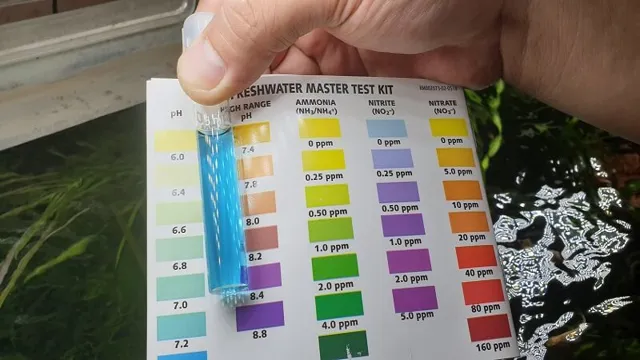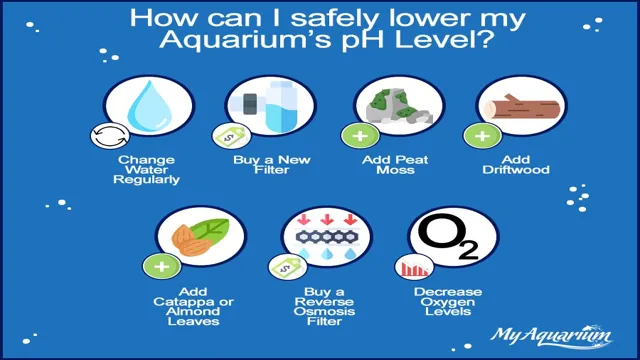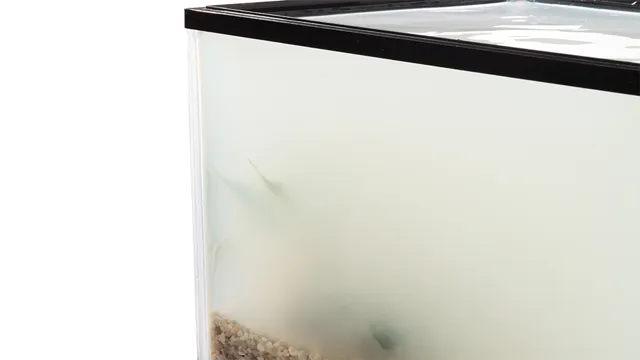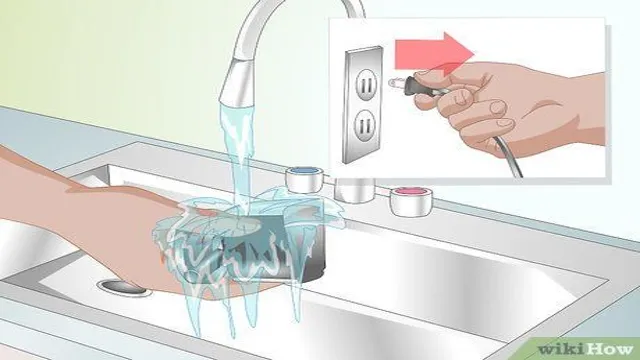How to Check pH Levels in Aquarium: A Beginner’s Guide to Balancing Water Quality

Maintaining a well-balanced aquarium is essential for the health and longevity of your aquatic pets. Water in the aquarium must contain the right levels of pH, ammonia, nitrates, and other parameters to keep your fish and plants healthy. One of the essential water chemistry parameters to keep track of is pH, which measures acidic or basic levels of water.
PH levels can affect fish behavior and can cause stress or harm to your aquatic pets. Therefore, it is crucial to check pH levels regularly to ensure a healthy environment for your fish. In this blog post, we will guide you on how to check pH levels in your aquarium and maintain them at optimal levels.
Why pH Levels Are Important for Your Aquarium
If you have an aquarium, it is essential to monitor the pH levels regularly. pH is the measurement of acidity or alkalinity in the water. If the pH level is not within the appropriate range, it can harm your aquatic plants and animals.
Different species of fish and plants thrive in specific pH ranges. Some fish may require a pH level of 7, whereas others may need a pH level of
To check pH levels, you can use a pH testing kit containing testing strips or a digital pH meter. Dip the strip into the water, or place the probe in the water, and wait for the results. If the pH level is not within the appropriate range, you can adjust it using a pH buffer.
Maintaining your aquarium’s pH level is crucial to create a healthy and thriving environment for your aquatic pets. Remember, happy fish make a happy aquarium!
Maintaining a Healthy Environment for Your Fish
As a fish owner, it’s important to understand the significance of maintaining a healthy environment for your beloved pets. This includes monitoring the pH levels of your aquarium, which is critical for the well-being of your aquatic creatures. pH levels refer to the concentration of hydrogen ions in the water, and it’s measured on a scale of 1 to 1
A pH level below 7 is considered acidic, while a pH level above 7 is basic. The ideal pH level for most fish is between 5 to
If the pH levels in your aquarium fluctuate too much, it can cause stress to your fish and weaken their immune system, making them more susceptible to diseases. Therefore, it’s important to test the pH levels regularly and take any necessary actions to maintain the balance.
This could include adding chemicals or adjusting the water hardness to reach the ideal pH range for your fish. By taking care of the pH levels in your aquarium, you are ensuring a healthy and happy home for your fish.

Testing pH Levels in Your Aquarium
Maintaining the correct pH levels in your aquarium is crucial for the health and well-being of your fish. To ensure your aquarium is at the right pH level, you need to check the water regularly. The easiest way to check pH levels in an aquarium is to use a pH testing kit.
First, fill a test tube with water from your aquarium up to the designated line on the tube. Add a few drops of testing solution to the water, and shake the test tube gently. The solution will change color, indicating the pH value of the water.
Match the color to the corresponding color chart to determine the pH of the water. If the pH level is not within the correct range, you may need to add pH adjusters to your aquarium to balance the levels. Remember, maintaining a stable pH level in your aquarium is essential for healthy, thriving fish.
Choosing the Right pH Testing Kit
When it comes to maintaining a healthy aquarium, testing the pH levels regularly is crucial. Choosing the right pH testing kit can make the process easier and more accurate. There are different types of testing kits available, including liquid test kits and test strips.
Liquid test kits are more precise but require more steps, while test strips are more convenient but may not provide as accurate results. It’s also important to choose a kit that matches the pH range of your specific aquarium. To ensure accurate readings, it’s essential to follow the instructions carefully and test the water regularly.
A pH testing kit is an important tool for any aquarium owner, helping to maintain the health and wellbeing of your aquatic pets.
Preparing Your Aquarium for pH Testing
Before testing the pH levels in your aquarium, it’s important to prepare it properly. Begin by performing a partial water change to remove any pollutants or debris that could affect the pH reading. Next, check your filter system to ensure it’s working efficiently and clean or replace it if needed.
Once you’ve addressed these steps, you can now begin preparing your testing solution. There are various commercially available test kits for measuring your aquarium’s pH, from strips to liquid kits. Follow the instructions carefully to get an accurate reading.
Remember that a healthy pH range for aquariums is typically between 5 and
If the pH levels in your aquarium are too high or low, it could negatively impact the water quality, which can be harmful to your fish or aquatic creatures. Testing the pH levels in your aquarium regularly can help you maintain a stable environment for your aquatic inhabitants and ensure their longevity.
Performing the pH Test
Testing the pH levels in your aquarium is an essential part of maintaining a healthy habitat for your fish. pH levels determine the acidity or alkalinity of the water, and if they are too high or too low, it can be harmful to your fish. To perform the pH test, you will need a pH testing kit, which can be purchased at your local pet store.
To begin, fill a test tube with water from your aquarium, add a few drops of the testing solution, and shake the tube gently. The color of the water will change, indicating the pH level of your water. Ideally, the pH level of your aquarium water should be between
5 and 5, which is a neutral to slightly acidic range. If the pH level is above or below this range, you’ll need to make adjustments to ensure your fish stay healthy.
One way to do this is by using a pH balancing product, which can help regulate the pH level and create a more stable environment for your fish. Remember, testing your aquarium’s pH levels regularly is crucial for maintaining a safe and healthy environment for your fish.
Interpreting the Results
Checking the pH levels in your aquarium is crucial to maintain a healthy environment for your fish and plants. Understanding the results of your pH test kit is essential, as the readings will vary depending on the water’s acidity or alkalinity. The pH scale ranges from 0 to 14, with 7 considered neutral.
A pH level below 7 is acidic, and above 7 is alkaline. When interpreting your pH test results, it’s best to follow the recommendations for your specific fish species, as they require different pH levels to thrive. Some fish, like angelfish, prefer a slightly acidic environment (pH
0-5), while others, like African cichlids, thrive in alkaline water (pH 8-
6). Plants also require a specific pH range to absorb nutrients optimally. A pH between
5-5 is suitable for most aquatic plants. Keep in mind that sudden changes in pH can adversely affect the aquarium’s inhabitants, so it’s best to aim for a stable pH level.
If needed, you can adjust the pH by using a pH-adjusting product or adding buffering materials. By understanding and monitoring your aquarium’s pH levels, you can ensure that your fish and plants are healthy and thriving.
Understanding pH Scale and Ideal Range for Fish
pH scale, ideal range, fish Now that you have tested your fish tank water for pH levels, what do the results mean? The pH scale ranges from 0-14, with 7 being neutral. Anything below 7 is acidic, and anything above 7 is alkaline. For most fish, the ideal pH range is between
5- If your results fall outside of this range, don’t panic.
There are ways to adjust the pH level, such as using pH buffers or adding certain materials to the tank. However, it’s important to make adjustments slowly, as sudden changes can be harmful to the fish. Remember, the ideal pH range varies depending on the type of fish you have.
Some fish require a more acidic environment, while others require a more alkaline environment. It’s important to research the specific needs of your fish to ensure they are thriving in their environment.
What to Do If pH Levels Are Too High or Too Low
Interpreting the results of pH tests is critical when it comes to maintaining a healthy balance in your water system. High pH levels can lead to mineral buildup and scaling, while low pH levels can cause corrosion and damage to pipes and equipment. If your pH levels are too high or too low, there are a few things you can do to correct the issue.
For high pH levels, you can add an acid such as muriatic acid or sodium bisulfate to the water to bring the levels back to neutral. On the other hand, if your pH levels are low, adding a base such as sodium carbonate or sodium hydroxide can raise the levels back to neutral. It’s important to remember that adding too much of these chemicals can have adverse effects, so it’s best to add small amounts and retest frequently to ensure you’re maintaining the ideal pH balance for your specific water system.
Conclusion
So, there you have it – the ultimate guide to checking pH levels in your aquarium! With a little patience, practice, and of course, some trusty testing equipment, you’ll be well equipped to keep your fishy friends swimming in the perfect environment. Just remember, pH levels are one of the most important factors in maintaining a healthy aquatic ecosystem, so don’t neglect them! Now, if only we could find a way to test the pH levels of our own lives with such ease and precision..
.”
FAQs
What is the ideal pH level for an aquarium?
The ideal pH level for most freshwater aquariums is between 6.5 and 7.5.
How can I test the pH level of my aquarium water?
You can use a pH test kit or a pH meter to test the pH level of your aquarium water. Follow the instructions included with the testing kit for accurate results.
What can cause fluctuations in aquarium pH levels?
Fluctuations in aquarium pH levels can be caused by factors such as new additions of water, decorations, and fish, as well as changes in filtration or lighting.
How often should I test the pH level of my aquarium water?
It is recommended to test the pH level of your aquarium water at least once a week, especially if you have a new aquarium or have made recent changes to your setup.
What can I do if the pH level in my aquarium is too high or too low?
Depending on the cause of the high or low pH level, you may need to make adjustments to your aquarium’s water chemistry, such as using pH buffers or adjusting the water hardness. It’s best to seek the advice of a knowledgeable aquarium professional before making any major changes.
Can a high or low pH level be harmful to my fish or other aquatic animals?
Yes, a high or low pH level can be harmful to your fish and other aquatic animals. It can cause stress, illness, and even death if not properly addressed.
Are there any natural ways to maintain a stable pH level in my aquarium?
Yes, you can use certain types of aquatic plants or natural materials such as driftwood or peat to help maintain a stable pH level in your aquarium. It’s important to research and choose the appropriate natural solution for your specific aquarium setup.






